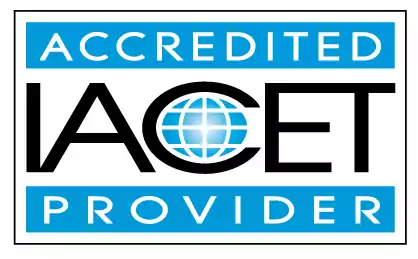Explain how sensory processing differences can influence children’s behavior.
Central objective: explain how sensory processing differences influence children’s behavior in early childhood education and child care centers. Supporting elements: practical, easy-to-implement strategies to adapt arts and crafts for younger children and for kids with different abilities, helping caregivers create inclusive, calming activities that reduce challenging behaviors.Trainings incorporating this outcome
CDA Subject Areas
Proficiency Level
Target Audience
Topic Areas
Price
States
Alabama (1) Alaska (1) Alberta (1) Arizona (1) Australia (1) British Columbia (1) California (1) Colorado (1) Connecticut (1) Delaware (1) District of Columbia (1) Florida (1) Hawaii (1) Idaho (1) Indiana (1) Iowa (1) Jamaica (1) Kansas (1) Louisiana (1) Maine (1) Manitoba (1) Maryland (1) Massachusetts (1) Mississippi (1) Montana (1) Nebraska (1) New Hampshire (1) New Jersey (1) New Mexico (1) Newfoundland and Labrador (1) Ohio (1) Oklahoma (1) Ontario (1) Oregon (1) Puerto Rico (1) Rhode Island (1) Saskatchewan (1) South Dakota (1) Texas (1) Thailand (1) United Kingdom (1) Utah (1) Vermont (1) Virgin Islands (1) Virginia (1) Washington (1) West Virginia (1)
6 hours courses
 0.6 CEUs
0.6 CEUs online
4.2/5
Related Outcomes
- Demonstrate understanding of cultural differences and its influences on a child's social behavior.
- Explain the role of respect in children’s behavior.
- The participant will demonstrate knowledge and understanding the major milestones, typical behaviors and learning processes of children birth to 13 years of age
- Demonstrate understanding the major milestones, typical behaviors and learning processes of children birth to 13 years of age
- Explain effective strategies to guide children’s technology use and combat the media’s influence.
- Explain how autism spectrum disorder affects play behaviors, sensory preferences, and communication development.
- Explain the possible causes and results of traumatic brain injury in infants and young children.
- Define and identify common signs and behaviors of children and youth with Autism Spectrum Disorder.
- Explain the different forms and documents needed in child care.
- Identify appropriate practices for identify and demonstrate an children: Identify examples of appropriate activities for different ages
- Recognize that children develop independence at different stages.
- Recognize the importance of consistency, continuity, and responsiveness in supporting pro-social behaviors in children.
- Describe the difference between unintentional injuries and nonfatal injuries children can experience.
- Define and identify common signs and behaviors of children and youth with fragile x syndrome.
- Explain different types of modes/ delivery methods of mentoring.
- Identify different learning styles of young children
- Define and identify common signs and behaviors of children and youth with cerebral palsy.
- Define and identify common signs and behaviors of children and youth with fetal alcohol syndrome.
- Define and identify common signs and behaviors of children and youth with conduct disorder.
- Define and identify common signs and behaviors of children and youth with hemophilia.
Related Articles
- How Can Culture Affect A Child’s Development?
- Nurturing Hearts and Minds: The Critical Role of Social-Emotional Learning in Early Childhood
- Surviving Toddler Tantrums: A Guide for Parents Who Secretly Wonder If Their Kids Have a Future in Drama
- A quirky investigation into why kids’ sleep cycles can be unpredictable
- Helping Your Child Navigate the Flashbacks and Triggers of PTSD
- Elf on the Shelf or Stress on the Shelf? Recognizing Holiday Anxiety in Kids
- 7 Skills Every Childcare Provider Should Master
- CDA Portfolio: Build a Winning Child Development Associate Portfolio
- How Cultural Influences Shape Child Development
- Special Needs Daycare: How to Create an Inclusive Environment
- 🧩 Early Signs of Autism in Toddlers — What to Watch For 👀
- 🧩 How Do I Support a Student with Autism While Managing Classroom Behavior and Learning? 💕
- 🧩 How Can You Make Your Classroom More Inclusive for Children with Autism?
- 💛🧩 How Can I Make My Teaching More Inclusive for Children with Autism?
- 🤯 Why Is This Child Acting Out All of a Sudden?
- Recognizing Early Signs of Sensory Processing Challenges
- 🚩👶 What Are the Red Flags in Infant Development Every Educator Should Know?